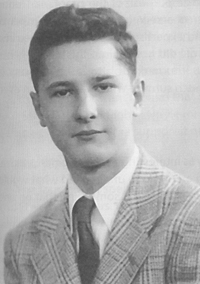 A country often looks to engineers to solve its problems. At the height of the Cold War thousands of American engineers worked at a fervent pace to develop technologies to beat the Soviet Union; few fully understood how much their actions would impact future generations.
A country often looks to engineers to solve its problems. At the height of the Cold War thousands of American engineers worked at a fervent pace to develop technologies to beat the Soviet Union; few fully understood how much their actions would impact future generations.
On Nov 15, 1957 Soviet party chief Nikita Khrushchev bragged to an American reporter of Soviet rocket superiority and issued the United States a challenge: to match the Soviet’s ability to produce Intercontinental Ballistic Missiles (ICBM). He added that any war with the Soviets "would be fought on the American continent, which can be reached by our rockets." Sputnik 1 and Sputnik 2 were successfully launched weeks earlier and the Soviets appeared to have the lead in the space race. Eight days earlier, a report from the Gaither Committee to President Dwight D. Eisenhower was leaked to the press. It asserted that the Soviet Union had developed “a spectrum of A- and H-bombs and produced fissionable material sufficient for at least 1,500 nuclear weapons.” Fear of the “missile gap” permeated every American household.
That same year, a young mechanical engineer named John Segletes graduated from the Drexel Institute of Technology. He attended Drexel on the GI Bill and completed a co-op at General Electric as a student. One year after leaving Drexel, Segletes took a job working for GE. He had no way of knowing how much his decision later help to shape the course of history.
Segletes was assigned to a team of several hundred engineers working on the reentry problem for Discoverer, a scientific program designed to send mice and monkeys into an Earth orbit. Discoverer had an ulterior motive, Project Corona, a clandestine mission sponsored by the CIA and the U.S. Air Force to obtain aerial reconnaissance photos of Soviet ICBM technology.
In 1958 wireless transmission of images was still decades away from existence. Securing photographic evidence of Soviet missile technology meant sending a satellite containing a traditional film camera into orbit and then safely recovering it to analyze the photos.
One of Corona’s major challenges involved designing a heat shield for the satellite reentry vehicle capable of protecting the valuable photographic payload during the immense temperatures encountered during reentry. A failure of the heat shield meant a failure of the mission.
Segletes was in charge of the thermal analysis for reentry, specifically, to determine the thickness and types of materials necessary for the heat shield to survive its plummet back to Earth. His calculations helped to determine the exact temperature the reentry vehicle would encounter and how much of the heat shield would burn away during reentry. “It was really hectic…in the early phase of testing there were a number of unanticipated problems,” Segletes said.
Corona, under the guise of Discoverer, completed its first successful mission in August 1960 and proved that Khrushchev was bluffing. No missile gap existed. The fear of nuclear annihilation was not as great as once thought. Eisenhower could now make decisions based on positive intelligence, instead of speculation and fear. The project also marked the first time an object was successfully recovered from orbit; technology that paved the way for future NASA missions.
During the majority of his four years at GE, Segletes was unaware of Discoverer’s true nature. “Most of the engineers, including myself, were not informed of its purpose. Corona was not even a name that was mentioned,” Segletes said.
Segletes eventually learned of Discoverer’s true intentions after several test flights, however, due to the program’s top secret nature, he was unable to tell anyone about his involvement until the program was declassified in 1995.
“People were building bomb shelters, there were anti-missile batteries placed outside of major American cities, children practiced duck and cover drills in schools, the atmosphere was very disturbing,” Segletes said. “But when the Cold War heated up, the country turned to engineers to stay ahead in the space race and find solutions to complex problems. I thought it was a really great time to be an engineer,” he added.
John Segletes received a Bachelor’s of Science in Mechanical Engineering from the Drexel Institute of Technology in 1957. He currently lives with his wife in Pottstown, Pennsylvania.